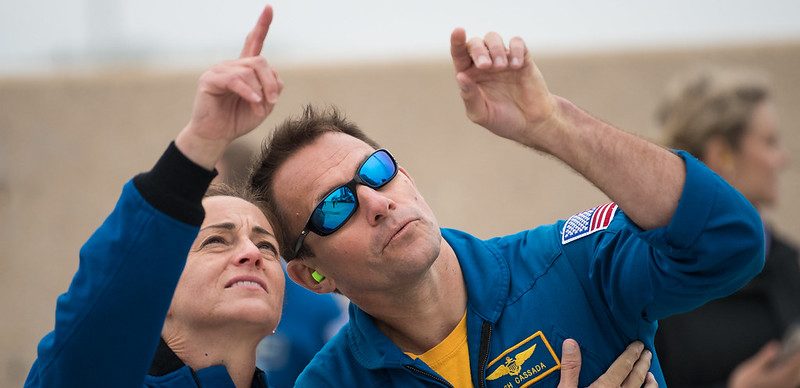Depending on the agency’s size, maturity and mission statement, “modernization” can mean different things and produce diverse initiatives. The high-level goal may look similar – to increase agility or be more receptive to better ways of working – but the strategic focus and operational procedures will likely differ.
Here are some examples of what they may look like.
NASA’s Goddard Space Flight Center
Letting people do what they do best.
At the Goddard Space Flight Center, the goal of IT modernization is simple: to allow employees to do what they do best, and not worry about the rest.
Modernization is being able to provide the infrastructure, platforms and services that can free up customers and employees to do the tasks they are skilled at doing, said Robert Leahy, Chief Information Officer and Director of the NASA Goddard Space Flight Center’s IT & Communications Division.
“The engineers and scientists who are doing the really cool stuff at Goddard and NASA don’t need to be concerned with operations and maintenance,” Leahy said.
What it looks like: Last summer, when an emergency directive required teams to patch a Microsoft Windows server, one division at Goddard struggled. It was the division that controlled spacecraft, so patching servers wasn’t its usual expertise. So, while the team could have been doing more valuable tasks according to their skills, it spent more time than desired trying to patch a server.
That’s why Leahy’s team is in the process of building out a modernized infrastructure, so teams that aren’t charged with IT maintenance don’t have to worry about it.
U.S. Army Corps of Engineers
Training people to keep them up to date with the right tools.
Often, when we think about the term “modernization,” we think of technologies and gleaming new objects. But at the U.S. Army Corps of Engineers, the focus takes a different form.
“When we think modernization, we think people,” said Dovarius L. Peoples, Chief Information Officer of the U.S. Army Corps of Engineers.
At the end of the day, if the people aren’t supported with the right tools and training, agencies will see limited success in their modernization efforts, Peoples added.
What it looks like: The Corps has established several initiatives to support remote learning and communications now that many employees are teleworking. The pandemic has not put training and developing the workforce in the backseat.
The Corps is also working with industry partners, so engineers can learn industry-grade skills and technical capabilities. “Once we’ve learned how to use the capabilities, then we can fish on our own,” Peoples said.
State Department
Identifying the right stakeholders to reimagine the business.
With over 300 different cloud implementations supporting 275 posts overseas, the State Department has a lot of modernization initiatives on its plate. What makes it work, however, is its bold focus on modernizing – or reimagining – the business.
“I can’t emphasize enough how important it is to think about the change holistically,” said Brian Merrick, Director of the Cloud Program Management Office at the State Department.
- “Thinking about it from the business side back in, and not from the tech side out,” he said.
What it looks like: Modernizing backend IT systems, for example, can be successfully funded and implemented if you can latch onto a specific business problem.
That’s what the department did to modernize refugee processing overseas. “It started with assisting a business need,” Merrick said. They had identified and engaged the business owner and stakeholders early on and figured out how to make sure expectations could be met for successful implementation. You absolutely have to identify the stakeholders upfront.”
National Institutes of Health
Empowering end users to use data for their jobs.
Data collection, dissemination and dashboards have been instrumental tools in addressing the pandemic. It’s no surprise then, that at the major medical research facility, data is a central component to the National Institutes of Health’s (NIH) modernization efforts.
“When I think about IT modernization for data science capability at NIH, it’s really to improve our data infrastructure and enable a more fair, findable, accessible, interoperable and usable data ecosystem,” said Susan Gregurick, Associate Director for Data Science and Director of the Office of Data Science Strategy at NIH.
- In other words, IT modernization means empowering the end user with capabilities to leverage data.
What it looks like: To reach this goal, one initiative was to make its various, robust platforms interoperable, or able to talk to one another. It connected platforms dedicated to heart, lung and blood studies with those on genomic research, pediatric data and cancer imaging.
The agency set up interoperability by essentially allowing researchers to log in to a system once through an authentication service to access all the different data.
To build this capability, the team used agile methodology, which is a way of working in increments and iterations with the end user. “It’s been a lot of fun,” Gregurick said.
This article is an excerpt from GovLoop’s recent report, “Embracing a Culture of Change.” Download the full report here.





Leave a Reply
You must be logged in to post a comment.